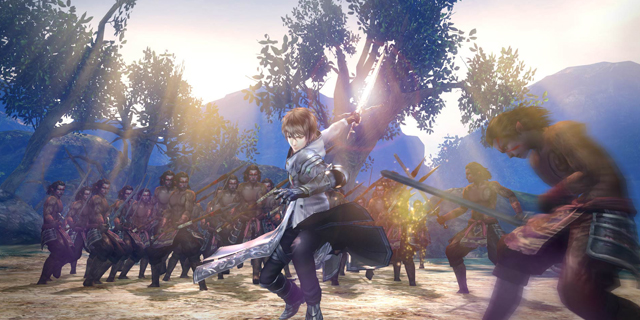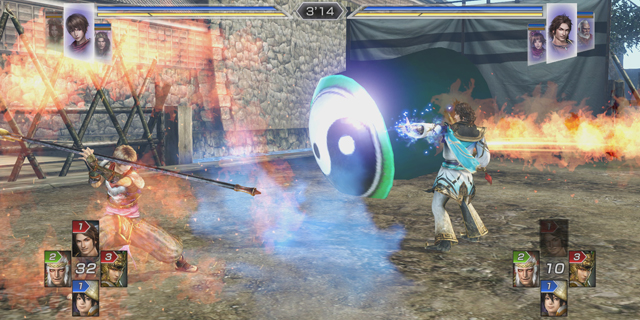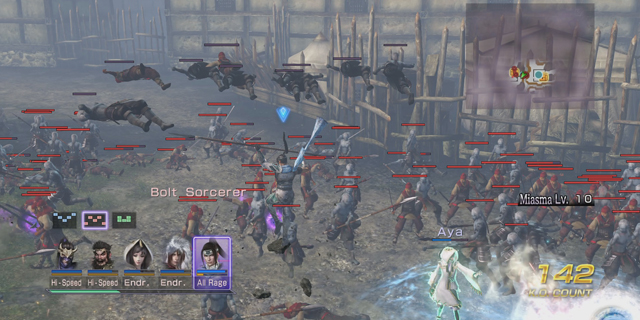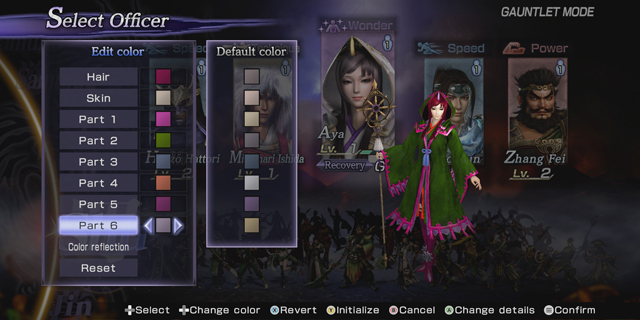
The long, long line of Musou games thrives on sheer volume of content. Those who aren’t fans of the series will get nothing out of the prospect of doing something they don’t like dozens upon dozens of times, but if you buy into the Warriors formula, you can expect Omega Force to pile your plate high with characters, battles and unlockables. Warriors Orochi 3 Ultimate, the third enhanced edition of the game, adds an extra layer of cameos and modes to a title that already offered quite a bit.
The original Warriors Orochi 3 may have been followed by many other games in the intervening years, but it has remained one of the wider genre’s best installments through this strangeness: it bears what may be the most compelling story by virtue of giving up entirely on making it logical. It’s a mash-up of every IP Koei Tecmo can get its hands on, with a gathering of forces to take on the big bad evil. The core conceit is time travel: you have to repeatedly go back and change more and more things, until your full army survives to the final battle.
This new Ultimate edition brings all the additions from the Wii U-exclusive Hyper back to the PS3, Vita, PS4 and Xbox One, and supplements that with even more for those who’ve played that version already. The biggest returning feature is Duel Mode, a one-on-one fighting game with Warriors mechanics and card-based equippable special moves. It’s still the acquired taste that it was on Wii U, as it’s not balanced like most fighters, but it runs more smoothly (at least on PS4), which goes a long way to making it more enjoyable. (And unlocking each character gives you one more card to use, making for an extra incentive to head back into the game’s Story Mode content.)

As if you needed more characters to play (though, like I said, maybe you did?), Ultimate adds a few more, notably Sterk (of Atelier fame), Soul Calibur‘s Sophitia and Dead or Alive‘s Kasumi (joining previous cameo Ayane). There’s also a group of original characters to star in added prologue and epilogue chapters explaining the rise of Orochi and the aftermath of the game’s final battle.
What’s important to remember here is that, for the most part, Ultimate doesn’t try to implement the changes and improvements featured in Dynasty Warriors 8 and Samurai Warriors 4. The technical improvements here are minimal, to retain cross-play capability between PS3, Vita and PS4 (as well as save import functionality, though only from the original PS3 edition of Orochi 3), but they do exist. For one, each character gets another move, one triggered by hitting R1 while in the air. You can also do a few things with all three of your chosen characters at once, like put them all out on the field (making you more powerful but also vulnerable to failure from one fighter’s death) or make some flashy group Musou moves.

The one DW8 improvement that made it in was a convenient one: horses can be summoned and auto-mounted while running by holding down the button as you progress. Outside of that, there are some things that are tacked on here and there, like extra weapons and custom costume colors (in some modes, anyway), but if you’re expecting a large change to how the game’s played, you’ll be disappointed.
Ultimate‘s biggest new addition is the Gauntlet Mode, a party-based, procedurally-generated take on the Orochi formula that has players grinding against stronger and stronger foes to gain powerful crafting items and other goodies. The focus here is on managing your party’s formation and seeking out these goods, and it’s all clearly deep but with very little explanation of what formations do and when to use them. The camera’s zoomed out and a bit more overhead in this mode, possibly to handle what seems like an increased number of foes on screen and a five-member group of heroes to keep an eye on. Still, it provides a way to use many more characters, and it’s nice to see something that tries to change up the usual formula.
For those picking up the game on new hardware and expecting improvements, Ultimate doesn’t come through particularly well. It’s likely, as mentioned previously, about the technical limitations of cross-play, but the game will stutter and enemies will pop in exactly as they would with a PS3 or Vita game, and while it feels like there’s less slowdown overall, it’s something to keep in mind for those expecting an “upgrade” of some sort beyond some simple visual filters. It does take advantage of the consoles’ new sharing and streaming capabilities, but there’s nothing outside of the default hardware feature set.

It’s notable that the myriad updates of the title have left things feeling a bit disjointed at times. Duel Mode feeds very little into the rest of the experience, and Gauntlet Mode, a construct designed very much to supplement other areas with cool items, has its own set of features (like color edit and five-hero play) that never escapes to the main Story Mode. There’s still no real incentive to build your own battlefields, as there’s more than enough to take on in the existing content, but its inclusion at least doesn’t detract from the experience. (Well, much. Progressing through Story Mode will have you mashing the button over and over again as each victory elicits a few dozen unlock prompts for characters, costumes, battlefield elements, Duel Mode cards and in-game wallpapers.)
Warriors Orochi 3 Ultimate may not be a better game for those who didn’t love the thing already, but it is the best version of arguably the best full game package currently on offer for Musou fans. Whether it offers enough for players to double-dip is certainly up for debate, but if you haven’t played Orochi 3 yet (and certainly if you’ve given the series a rest for a while), this may be the enticing collection to draw you in.
Pros: Increased amount of content, cross-play functions, new customization
Cons: Limited by its old tech, new modes may not be worth a double-buy



















